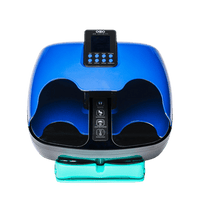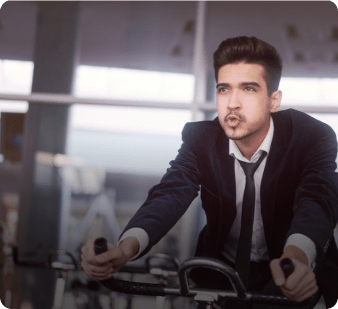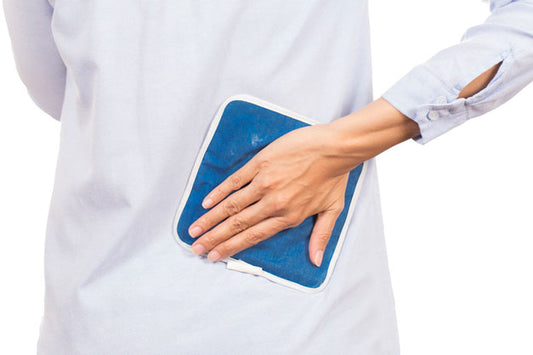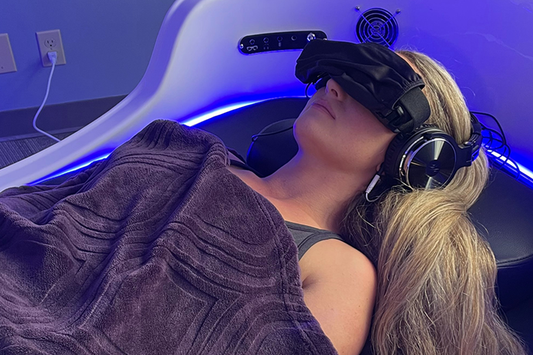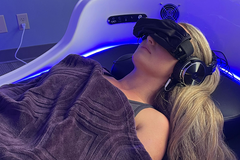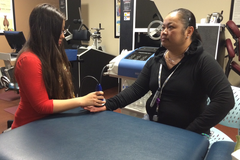Stretching has been a routine part of exercise and fitness for a long time. The Greeks used to stretch prior to exercise/competition and to this day, athletes stretch prior to competing. The age-old questions are, does stretching actually work, what stretches should you do, and what is the best way to stretch? Continue reading for more information.
*Before beginning a new stretching or exercise routine, check with your physician*
 Benefits
Benefits
The intention of stretching is to elongate the muscles and fascia (the white tissue adjacent to muscles, analogous to the tough sinewy tissue in a cut of steak), and to relax them so you can move more efficiently. Stretching prepares you for exercise and can reduce the chances of straining muscles while exercising. Some muscles in your body may be tighter than others because they are compensating for an injury, weakness, or they may be guarding if you're in pain. These compensations the body's way of adjusting in order to keep us upright and active despite injuries by tightening muscles or fascia to support a joint, even though it limits our motion. However, this does not come without consequences. If this protective response goes on for too long, or becomes overly protective, it can result in secondary issues that are more pronounced than the original problem. This is why stretching can be so beneficial. Stretching cannot only help with injuries, pain, and tension, but it can also reduce the body's overreaction to dysfunction. Some of the benefits of stretching include:
- Improved posture
- Stress reduction
- Decreased muscle tension and stiffness
- Reduced risk of injury by loosening tissues
- Increased circulation as tight muscles impede blood flow and stretching relaxes tight muscles
- Prepares muscles for exercise and strength training. Certain stretching techniques have been shown to increase strength when performed just before strength training.
- Stretching during recovery days can relieve post-workout soreness
There has been much debate about whether stretching can make permanent changes to muscle length. Research on stretching has yielded conflicting results. One thing that is certain is that if stretching feels good to you, you should do it. We will continue to collect evidence on stretching until we get a definitive answer, but if it works for you, then the mixed results of studies should not stop you from doing it.
Preparation
We recommend warming up prior to stretching to reduce the risk of injury. There are a couple options for warming up.
The first is to apply dry or moist heat, depending on the supplies you have available. Keep the heat on for 5-10 minutes to bring blood to the area you plan to stretch. Be sure to monitor the temperature of the heat pack you are applying to prevent burns.
The second option is to perform 5-10 minutes of light cardiovascular exercise. Stationary biking, walking around the block, or calisthenics, (i.e. jumping jacks) are all excellent choices to perform prior to stretching. Remember to keep the intensity and your heart rate low. The purpose of the warm-up is to get the blood flowing, not to do a cardiovascular workout.
To track your progress both within your stretching session and over several days, measure the range in which you can comfortably move the limb you are stretching before you get started. An example of this would be to measure how how far you can reach towards you toes while keeping your knees straight, prior to stretching your hamstrings. On day one you might touch your knees before stretching, but after stretching you could reach to your mid-shin. On day two you could touch the top of your shins before stretching and after you could touch your mid-shin again. As you continue to track your progress, you will begin to understand what works and does not work for you.
Types of Stretching
There are many strategies and variations one can employ to stretch. In this overview, we will discuss static, dynamic, proprioceptive neuromuscular facilitation (PNF), Active Isolated Stretching (AIS), and ballistic stretching. There are other stretching methods, however these are the ore common ones.
Static stretching is probably the type you are most familiar with. Typically, static stretching focuses on one muscle at a time. It involves moving a limb to where you feel restriction on one side of the limb, then holding for 15-30 seconds. It is important to not push the muscle into pain while doing this as pushing into pain will cause the muscle to tighten up more. You should feel a slight pull on the muscle you are stretching, but again, not pain.
Dynamic stretching works by opening up your range of motion through a series of movements. This type of stretching is used at the beginning of an exercise session. Picture an athlete preparing to run the 100-meter sprint. They often jump, lunge, and swing their arms prior to getting set in the blocks. This is an example of dynamic stretching. Incorporating stretches that mimic the movements that will follow in the sport you are about to play or the activity you are about to do is an integral part of dynamic stretching.
Proprioceptive neuromuscular facilitation (PNF) is a type of stretching that an athletic trainer or physical therapist would use to help improve the range of motion of a joint or muscle. It uses the nerves and the reflexes built into our nervous system to get muscles to relax. For example, when you tighten the quad muscle, your hamstring muscle on the other side of your thigh is automatically relaxed. This is a simple example, and there are several other ways that PNF uses the nervous system to improve range of motion.
Active Isolated Stretching (AIS) is a stretching technique that also usually involves a practitioner stretching a client. The movements are similar to static stretching, but instead of holding for 30 seconds, the stretch is held for 2 seconds, for 10 or more repetitions, and the client actively helps move the limb into the stretching position. A tenet of AIS is that a stretch that is held longer than 2 seconds at a time will activate the body's protective mechanism, making the muscle tighter to prevent injury when the muscle is being stretched maximally. It is possible to do this independently, however it is recommended to consult a professional to learn how to do it accurately.
Ballistic stretching is the use of momentum to push a muscle past its end range of motion. It is important to exercise extreme caution when attempting ballistic stretching. It uses "bouncing" in order to get the muscle to move past its stopping point, which has the potential to cause injury. Ballistic stretching is for experienced stretchers only.
Sources
1. https://www.healthline.com/health/exercise-fitness/dynamic-stretching
3. https://www.stretchingusa.com/active-isolated-stretching/
4. https://www.healthline.com/health/exercise-fitness/static-stretching
5. https://www.healthline.com/health/ballistic-stretching-it-safe

